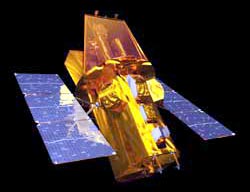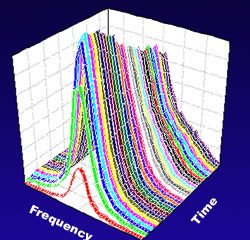This area deals with the fundamental laws and building blocks of nature and how they interact, the properties and the behavior of matter, and research into space and time and their structures.
innovations-report provides in-depth reports and articles on subjects such as astrophysics, laser technologies, nuclear, quantum, particle and solid-state physics, nanotechnologies, planetary research and findings (Mars, Venus) and developments related to the Hubble Telescope.

ESA’s Huygens probe, now orbiting Saturn on board the NASA/ESA/ASI Cassini spacecraft, is in good health and successfully passed its sixteenth ‘In-Flight Checkout’ on 23 November 2004.
This in-flight checkout procedure was the last one planned before separation of the Huygens probe from Cassini in December this year. The preliminary analysis of the real-time data received showed all events in the check-out procedure occurred as, and when, expected.
The procedure was carried out

Swift successfully launched today at 12:16 PM EST! Spacecraft separation occurred at about 80 minutes after launch as expected. Congratulations to the entire Swift team.
Gamma-ray bursts (GRBs) are the most powerful explosions the Universe has seen since the Big Bang. They occur approximately once per day and are brief, but intense, flashes of gamma radiation. They come from all different directions of the sky and last from a few milliseconds to a few hundred seconds. So far scient

A team at the University of Innsbruck, Austria has been successful in conducting electrons in metals along predetermined channels. This behaviour, observed for the first time in metals, provides important insights into the interactions of electrons – and on how the phenomenon of the current flow without any resistance loss, termed super-conductivity, can occur. Thereby this project aided by the Austrian Science Fund (FWF) combines fundamental research, at its best, with potential applications in

The Armagh Observatory’s ‘Human Orrery’ is the first large outdoor exhibit in the world to show accurately the elliptical orbits and changing relative positions of the planets and other solar system bodies with time. It has been constructed with the support of the Northern Ireland Department of Culture, Arts and Leisure (DCAL) and is the first major addition to the Observatory Grounds and Astropark for more than a decade. A ceremony to mark its construction will take place at the Observatory

Scientists have discovered that the air in the atmosphere around us is heavier (more dense) than they had previously thought. Knowing this will enable scientists to measure the mass of objects more accurately than ever before.
Writing in the Institute of Physics journal Metrologia, a team from the Korea Research Institute of Standards and Science (KRISS) and the International Bureau of Weights and Measures (BIPM) in France, report a new determination of the content of argon in a

It’s the scientific equivalent of having your cake and eating it too. A team of researchers from JILA, a joint institute of the Commerce Department’s National Institute of Standards and Technology and the University of Colorado at Boulder, has developed an efficient, low-cost way to measure the energy levels of atoms in a gas with extremely high accuracy, and simultaneously detect and control transitions between the levels as fast as they occur. The technique is expected to have practical applica